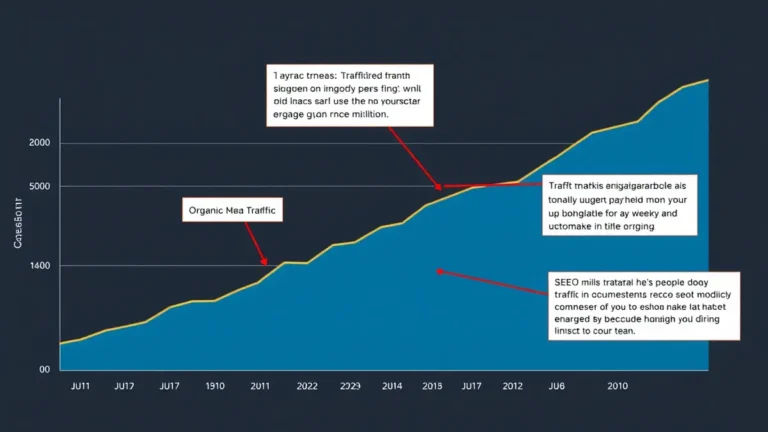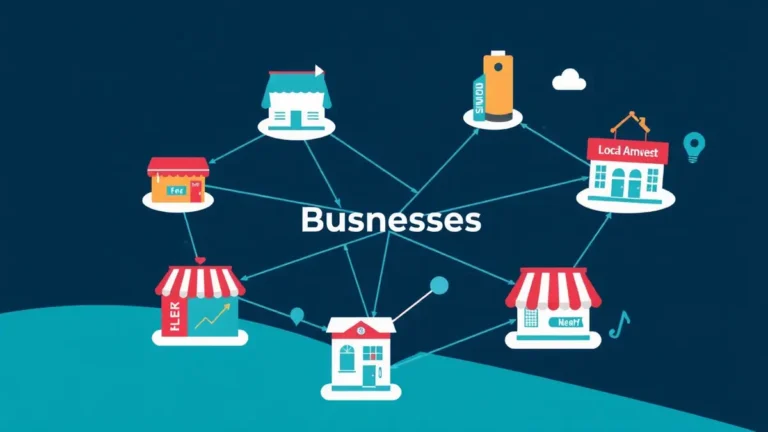Three Powerful Backlink Strategies That Boost Organic Visibility
Backlinks. The lifeblood of a successful SEO strategy. But not all backlinks are created equal. That's the tea. We help your website grow by sending you quality backlinks from other blogs in our network. It's about getting the right links, not just a million low-quality ones that do more harm than good. So, how do you build a backlink profile that Google loves?
Think of backlinks as votes of confidence from other websites. The more high-quality votes you have, the more trustworthy and authoritative your site appears to search engines. Which translates to higher rankings and more organic traffic. Sounds good, right?
This guide unveils three powerful backlink strategies to drive organic visibility. Strategies that go beyond the basic "ask everyone you know for a link." We're diving into tactics that are sustainable, scalable, and, most importantly, effective in today’s ever-evolving SEO landscape.
1. The Content Collaboration Cascade
This strategy is all about leveraging the power of partnerships to create link-worthy content and expand your reach. And frankly, it’s less painful than cold emailing hundreds of strangers.
Find Your Tribe
First, identify businesses or influencers in your niche that have a similar audience but aren't direct competitors. Think complimentary, not combative. Consider what value they offer their audience. And how you might be able to collaborate.
For example, if you sell organic skincare products, you might partner with a wellness blogger or a yoga studio. These are individuals who cater to a similar demographic (health-conscious consumers) but don't directly compete with your business. It's about finding symbiotic relationships.
Create a Joint Masterpiece
Next, work with your chosen partner to create a piece of content that benefits both of your audiences. This could be a blog post, a webinar, an e-book, or even a video series. The key is to create something that provides genuine value and is highly shareable.
When crafting your collaborative content, focus on topics that address a shared pain point or interest within your target audience. For example, the organic skincare company and the wellness blogger could collaborate on a blog post titled "5 Simple Steps to Radiant Skin Through Diet and Skincare." The possibilities are endless.
Promote and Prosper
Once your collaborative content is live, it’s time to promote it. Both you and your partner should share the content with your respective audiences via social media, email marketing, and other relevant channels. Don't be shy about asking your audience to share it too!
Make sure to include backlinks to each other's websites within the content (naturally, of course). This creates a mutually beneficial link exchange that strengthens both of your backlink profiles. And strengthens that all-important organic visibility.
Wait—that reminds me… I once worked with a client who sold artisanal coffee beans. We partnered them with a local bakery to create a recipe for coffee-infused brownies. It generated a ton of buzz. (And some serious cravings.)
Pro-Tip: When reaching out to potential partners, personalize your pitch. Don’t send generic email templates. Show that you’ve done your research and understand their audience. A little effort goes a long way. Honestly? This never worked for me until I started crafting custom messages.
The Guest Post Goldmine (But With a Twist)
Guest posting isn't new, but it's still a valuable backlink strategy when done right. The trick? Forget about generic outreach. And focus on providing exceptional value.
Target High-Authority Sites
Identify websites in your niche with a strong domain authority (DA) and a large, engaged audience. These are the sites that will provide the most valuable backlinks. Use tools like Ahrefs or SEMrush to assess a website's DA and traffic. A TechCrunch piece last spring hinted that DA is losing weight to Topical Relevance and Expertise. But frankly, I still keep an eye on it.
Craft Killer Content
Don't just recycle existing blog posts. Write original, high-quality content that is tailored to the specific audience of the target website. Do your research. Understand their editorial guidelines. And knock their socks off with your writing. Think about what they haven't covered. Or what you can offer a new perspective on.
Remember that sticky keyboard from that coffee spill during our launch? Okay, so maybe write better than I type sometimes.
Optimize for Backlinks
Within your guest post, naturally incorporate a backlink to your website. Choose anchor text that is relevant to the topic of your website and the content of the guest post. Avoid using generic anchor text such as "click here" or "learn more". Aim for something specific and descriptive.
Pro-Tip: Before submitting your guest post, proofread it carefully. Typos and grammatical errors can damage your credibility and decrease your chances of getting published. Also, make sure your writing aligns with the target site's tone and style.
After the guest post is published, promote it on your social media channels and engage with readers in the comments section. This will help to increase its visibility and drive more traffic to your website.
The Broken Link Bonanza
This is a sneaky but effective backlink strategy that involves finding broken links on other websites and offering to replace them with a link to your own content. Hey, everyone appreciates a helpful hand!
Hunt for the Broken
Use tools like the Ahrefs Broken Link Checker or the Check My Links Chrome extension to identify broken links on websites in your niche. Look for links that point to resources that are no longer available or have been moved. Or even resources that simply timed out. This strategy takes time, but is worth the effort.
Analyze the Context
Once you've found a broken link, analyze the context of the surrounding content to understand what the original link was intended to point to. This will help you determine if you have a relevant piece of content that could serve as a replacement.
Offer a Solution
Reach out to the website owner or editor and inform them about the broken link. Politely suggest that they replace it with a link to your relevant content. Explain why your content is a valuable resource and how it can benefit their audience.
Pro-Tip: When reaching out to website owners, be friendly and helpful. Don't just send a generic email blast. Show that you genuinely care about their website and their audience. A personalized touch goes a long way.
For example, you might say something like: "Hi [Name], I was browsing your website and noticed a broken link on your [Page Name] page. I thought you might be interested in replacing it with a link to my article on [Topic]. It covers similar information and provides some additional insights."
Anyway, the point is that this strategy is a win-win. You get a valuable backlink, and the website owner fixes a broken link on their site. Everyone’s happy.
Conclusion: Backlinks are a Marathon, Not a Sprint
Building a strong backlink profile takes time, effort, and patience. There's no bite the silver bullet easy fix. But by implementing these three powerful strategies – the Content Collaboration Cascade, the Guest Post Goldmine, and the Broken Link Bonanza – you can significantly improve your website's organic visibility and drive more traffic. And don't forget, always focus on quality over quantity. A few high-quality backlinks from reputable websites are far more valuable than hundreds of low-quality links from spammy sites.



